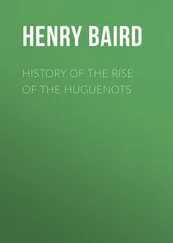The hardy resolution of the few who preferred exile and independence, and who found refuge in the mountains of Galicia and Asturias preserved the Peninsula from total subjection to Islam. During the long struggle of the Reconquest, the social and religious condition of Spain was strangely anomalous, presenting a mixture of races and faiths whose relations, however antagonistic they might be in principle, were, for the most part, dominated by temporal interests exclusively. Mutual attrition, so far from inflaming prejudices, led to mutual toleration, so that fanaticism became reduced to a minimum precisely in that corner of Christendom where a priori reasoners have been tempted to regard it as especially violent.
The Saracens long maintained the policy adopted in the conquest and made no attempt to convert their Christian subjects, just as in the Levantine provinces the Christians, although oppressed, were allowed to retain their religion, and in Persia, after the fall of the Sassanids, Parsism continued to exist for centuries and only died out gradually. [129]In fact, the condition of the Mozárabes, or subject Christians, under the caliphs of Córdova was, for the most part, preferable to what it had been under the Gothic kings. Mozárabes were frequently in command of the Moslem armies; they formed the royal body-guard and were employed as secretaries in the highest offices of state. In time they so completely lost the Latin tongue that it became necessary to translate the scripture and the canons into Arabic. [130]The Church organization was maintained, with its hierarchy of prelates, who at times assembled in councils; there was sufficient intellectual activity for occasional heresies to spring up and be condemned, like those of Hostegesis and Migetio in the ninth century, while, half a century earlier, the bull of Adrian I, addressed to the orthodox bishops of Spain and denouncing the Adoptianism of Felix of Urgel, which was upheld by Elipandus, Archbishop of Toledo, shows the freedom of intercourse existing between the Mozárabes and the rest of Christendom. [131]We hear of S. Eulogio of Córdova, whose two brothers, Alvar and Isidor, had left Spain and taken service with the Emperor Louis le Germanique; he set out in 850 to join them, but was stopped at Pampeluna by war and returned by way of Saragossa, bringing with him a number of books, including Virgil, Horace, Juvenal, Porphyry, the epigrams of Aldhelm and the fables of Avienus. [132]Mixed marriages seem not to have been uncommon and there were frequent instances of conversion from either faith, but Mozárabic zealots abused the Moslem tolerance by publicly decrying Islam and making proselytes, which was forbidden, and a sharp persecution arose under Abderrhaman II and Mahomet I, in which there were a number of victims, including San Eulogio, who was martyred in 859. [133]
THE MOZÁRABES
This persecution gave rise to an incident which illustrates the friendly intercourse between Christian and Saracen. In 858, Hilduin, Abbot of S. Germain-des-Prés, under the auspices of Charles le Chauve, sent two monks to Spain to procure the relics of St. Vincent. On reaching Languedoc they learned that his body had been carried to Benevento, but they also heard of the persecution at Córdova and were delighted, knowing that there must be plenty of relics to be obtained. They therefore kept on to Barcelona, where Sunifred, the next in command to the count, commended them to Abdulivar, Prince of Saragossa, with whom he had intimate relations. From Saragossa they reached Córdova, where the Mozárabic Bishop Saul received them kindly and assisted them in obtaining the bodies of St. George and St. Aurelius, except that, as the head of the latter was lacking, that of St. Natalia was substituted. With these precious spoils they returned in safety to Paris, by way of Toledo, Alcalá, Saragossa and Barcelona, to the immense gratification, we are told, of King Charles.[134] The persecution was but temporary and, a century later, in 956, we hear of Abderrhaman III sending Recemund, Bishop of Elvira (Granada), as his ambassador to Otho the Great at Frankfort, where he persuaded Liutprand of Cremona to write one of his historical works.[135] When the Cid conquered Valencia, in 1096, one of the conditions of surrender was that the garrison should be composed of Mozárabes, and the capitulation was signed by the principal Christian as well as Moslem citizens.[136]
The number of the Mozárabes of course diminished rapidly in the progress of reconquest as the Christian territories expanded from Galicia to Leon and Castile. Early in the twelfth century Alfonso VI, in reducing to order his extensive acquisitions, experienced much trouble with them; they are described as being worse than Moors, and he settled the matter by the decisive expedient of deporting multitudes of them to Africa.[137] The rapid progress of his arms, however, had so alarmed the petty kings among whom Andalusia was divided that they had, about 1090, invited to their assistance the Berbers known as Almoravides, who drove back Alfonso on the bloody field of Zalaca. Their leader, Jusuf ibn Techufin, was not content to fight for the benefit of his allies; he speedily overthrew their feeble dynasties and established himself as supreme in Moslem Spain. The Almoravides were savage and fanatical; they could not endure the sight of Christians enjoying freedom of worship, and bitter persecution speedily followed, until, in 1125, the Mozárabes invited the aid of Alfonso el Batallador. They sent a roll of their best warriors, comprising twelve thousand names, and promised that these and many more would join him. He came and spent fifteen months on Moorish territory, but made no permanent conquests, and on his departure the wretched Christians begged him to let them accompany him to escape the wrath of the Almoravides. Ten thousand of them did so, while of those who remained large numbers were deported to Africa, where they mostly perished.[138] The miserable remnant had a breathing spell, for the atmosphere of Spain seemed unpropitious to fanaticism and the ferocity of the Berbers speedily softened. We soon find them fraternizing with Christians. King Ali of Córdova treated the latter well and even entrusted to a captive noble of Barcelona named Reverter the command of his armies. His son Techufin followed his example and was regarded as the especial friend of the Christians, who aided him in his African wars.[139] Yet this interval of rest was short. In 1146, another Berber horde, known as Almohades, overthrew the Almoravides and brought a fresh accession of savage ferocity from the African deserts. Their caliph, Abd-al-mumin, proclaimed that he would suffer none but true believers in his dominions; the alternatives offered were death, conversion or expatriation. Many underwent pretended conversion, others went into voluntary exile, and others were deported to Africa, after which the Mozárabes disappear from view.[140]
THE MULADÍES
Yet it was as impossible for the Almohades to retain their fanaticism as it had proved for their predecessors. When, in 1228, on the deposition of the Almohad Miramamolin Al-Abdel, his nephew Yahia was raised to the throne, his brother Al-Memon-Abo-l-Ola, who was in Spain, claimed the succession. To obtain the assistance of San Fernando III, who lent him twelve thousand Christian troops, he agreed to surrender ten frontier strongholds, to permit the erection of a Christian church in Morocco, where the Christians should celebrate publicly with ringing of bells, and to allow freedom of conversion from Islam to Christianity, with prohibition of the converse. This led to the foundation of an episcopate of Morocco, of which the first bishop was Fray Aguelo, succeeded by Fray Lope, both Franciscans.[141] Co-operation of this kind with the Christians meets us at every step in the annals of the Spanish Saracens. Aben-al-Ahmar, who founded the last dynasty of Granada, agreed to become a vassal of San Fernando III, to pay him a tribute of 150,000 doblas per annum, to furnish a certain number of troops whenever called upon, and to appear in the Córtes when summoned, like any other ricohome. He aided Fernando greatly in the capture of Seville, and, in the solemnities which followed the entry into the city, Fernando bestowed knighthood on him and granted him the bearing of the Castilian guidon—gules, a band or, with two serpents, and two crowned lions as supporters—a cognizance still to be seen in the Alhambra.[142]
Читать дальше












